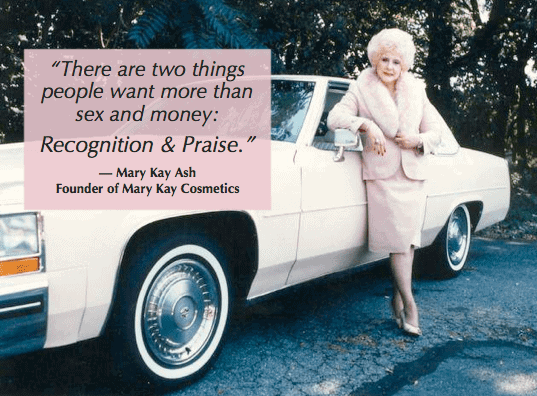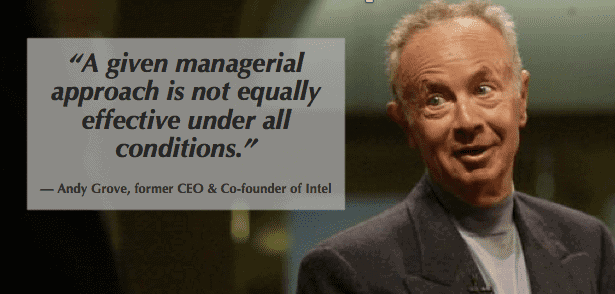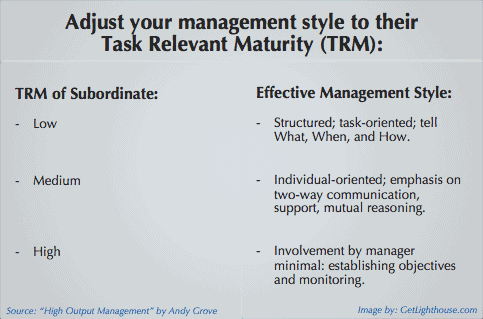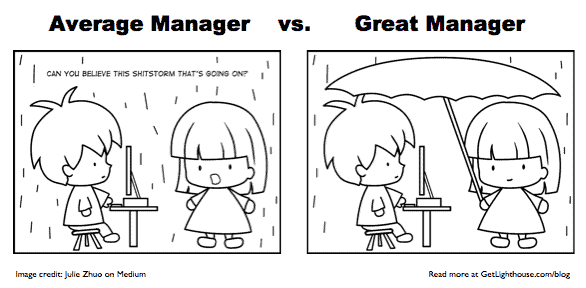The elephant and the rider. Imagine it. You're probably picturing yourself or another person on top of an elephant like this:
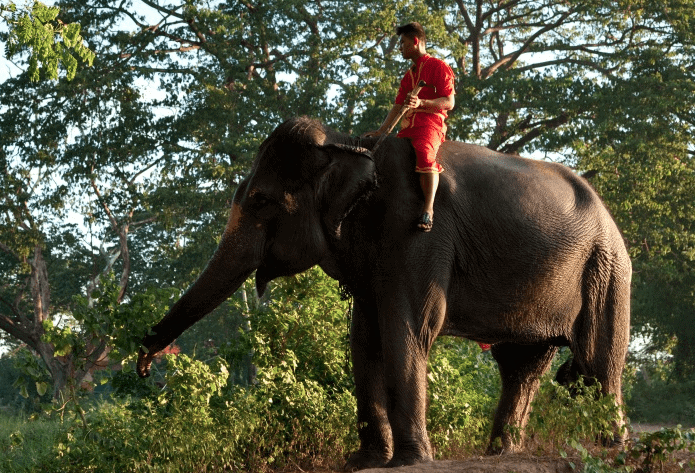
More than just a powerful, majestic image, this is a really helpful metaphor for how we all think and act.
Psychology researcher and professor at the University of Virginia, Jonathan Haidt, coined this concept in his book, The Happiness Hypothesis, as follows:
"The image I came up with for myself, as I marveled at my weakness [of willpower], was that I was a rider on the back of an elephant.
I'm holding the reins in my hands, and by pulling one way or the other I can tell the elephant to turn, to stop, or to go. I can direct things, but only when the elephant doesn't have desires of his own. When the elephant really wants to do something, I'm no match for him."
Your emotional elephant and rational rider
Over many generations, we have developed sophisticated instincts for survival. These instincts are critical for our most base needs in life and have been deeply wired into how we act. These instincts, and the emotions that come with them, are represented by the Elephant: powerful, strong, and impulsive.
Meanwhile, more recently, humans have developed the rational part of our psyche. Using logic, reason, and language, we can process information, look for patterns, and make long term decisions. This is the Rider: thoughtful, deliberate, but limited in strength and energy.
By understanding how these two parts of your mind (and that of your team) work, you can better motivate and lead.
How Leaders can use the Elephant and the Rider to Motivate their teams
The Elephant and the Rider is a great framework for understanding yourself and what drives you. If you want to really dive into the research on this and what it means, I highly recommend Haidt's book, The Happiness Hypothesis.
If you're looking for many step by step ways to apply it in your work and life, Chip & Dan Heath's book, Switch, is a great extension of the ideas, and a lighter read.
It's important and helpful to understand this concept for yourself and to apply it to your life. If you're also a manager or leader, it can be even more powerful to better understand how to motivate others. Here's a few ways to effectively use the Elephant and the Rider with your people:
- Remember the Elephant when you're focused on recruiting & retention
- Help their Rider when the Elephant is out of control
- Help them grow. They need goals
- Give Elephants the right amount of autonomy
- Help manage their motivational energy

1) Remember the Elephant when you're focused on recruiting & retention
Whether you're thinking about how to close someone you've been interviewing, or trying to keep your best people around, it's easy to focus on the rational parts of the offer: title, salary, benefits, etc.
While those are definitely important to anyone accepting a job, or being convinced to stay another year or two, those are all appealing to the Rider. And the Rider alone will not make the decision.
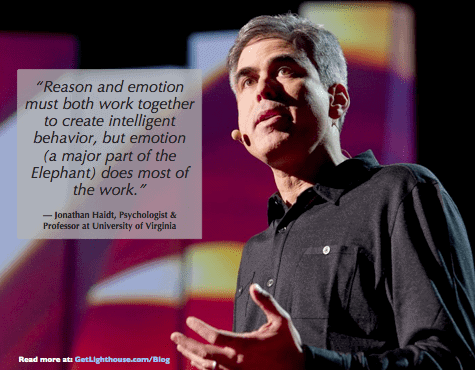
As Haidt found in research on those that had brain damage to the emotional part of their brains, these "Elephant-less" patients couldn't make decisions: "in the absence of feeling, they see little reason to pick one choice over the other."
Without the Elephant, the Rider will struggle to make a decision on logic alone. And even worse for you, knowing that the Elephant can overpower the rider, someone with a more compelling offer to the Elephant will beat your great offer to the Rider.
What does the Elephant want?
This is the big question to ask yourself. Remember, the elephant is emotion: sympathy, love, loyalty, and compassion.
As a manager, you have a variety of great ways to appeal to the Elephant:
- Build Rapport: Show you care about who they are as a person, not just a set of qualifications or list of skills to fill an open role.
- Learn what's important to them: There's a reason that people will often take pay cuts or choose lower offers; find out what is interesting to them about the role, your company, and their goals and you can tap into what excites the Elephant to come your way.
- Create a good work environment: Is your team filled with tension and conflict, or friendly and collaborative? The former will drive the Elephants in your employees crazy, while the latter, will have them hungry to work for you for a long time.
There's a reason that great managers have people continue to work with them job after job; they get the Elephant and the Rider in alignment for their team members, and put in the work to continue it after they're hired.
2) Help their Rider when the Elephant is out of control
No workplace is perfect. It is human nature for there to occasionally be problems, conflicts, and disagreements.
Many of these issues will affect the Elephant most, because they tap into our feelings and emotions. As a manager, you can help keep them from becoming lasting issues.
Beware the White Bear.
One of the challenges of the Elephant is that it has a tendency to dwell on issues. The Elephant can't help itself.

Haidt calls this the "white bear" problem. If I tell you, "Don't think about a white bear," there's a very good chance that in fact that's all you can picture now.
In the same way, if something captures the Elephant's attention, like a problem with a coworker, it's hard to focus on anything else.
Think about the last time you had a coworker you weren't getting along with. I bet there were many times you were upset at them even when you weren't directly dealing with them. If you were particularly frustrated with them, it probably made any work related to them much more difficult to complete.
Redirect the Elephant.
Your Rider will lose in a direct battle of wills with the Elephant; it is stronger and your Rider will tire. That means a Rider's best option is not to battle directly with the Elephant, but to refocus their energies.
If you have an employee in an emotional state, where their Elephant is making their work difficult, try one of these approaches:
- Directly address the issue: If they feel like the problem is being addressed or at least improving, it will relieve them of the tension that may be causing them to dwell on it.
- Redirect their focus: If they have other projects and work, give them a break from the problem area so their attention is elsewhere.
- Focus on gratitude: Ask them about areas they feel are going well. This flips them from dwelling on the negative to focusing on the positives in their job.
Gratitude is particularly powerful and can have a lasting, positive impact. In a number of studies reported in Harvard's Health Publications, people showing various forms of gratitude and positive self reflection were both happier and healthier.
In one such study, a manager simply recognizing their people and saying thank you was enough to have a major impact on the team's performance:
"Researchers at the University of Pennsylvania randomly divided university fund-raisers into two groups.
One group made phone calls to solicit alumni donations in the same way they always had. The second group received a pep talk from the director of annual giving, who told the fund-raisers she was grateful for their efforts.
During the following week, the university employees who heard her message of gratitude made 50% more fund-raising calls than those who did not."
If you want to improve performance, and help your people be at their best more often, keep the Elephant in mind by showing gratitude, and redirecting their Elephant when it's struggling.
3) Help them grow. They need goals.
One of the most interesting insights from Haidt is the idea that part of the emotional resonance of the Elephant is the need for purpose and goals to strive for:
"Aristotle...used the metaphor that people are like archers, who need a clear target at which to aim.
Without a target or goal, one is left with the animal default: Just let the elephant graze or roam where he pleases. And because elephants live in herds, one ends up doing what everyone else is doing."
When the herd is your team or company, doing what everyone else is doing will be a regression to average performance (or worse).
You are only as strong as your culture. If there's no growth, then your people are going to become creatures of routine. They'll just go with the flow, falling into mediocrity.
You can do better than that, and if you want to perform in a competitive market, you must.
A bored Elephant wanders.
Haidt's metaphor for purpose and goals continues with a significant threat every manager must fear:
"...Yet the human mind has a rider, and as the rider begins to think more abstractly...there may come a time when he looks around, past the edges of the herd and asks: "Where are we all going? And why?"
If your team has slipped into mediocrity with few clear goals to drive their Elephants towards, you are at risk of losing them. Eventually, they'll grow bored, tired, or find a goal outside of your work to satisfy them, and you'll lose them.
Your greatest threat: the work anniversary
This chart from research by Entelo of over 1 million employees paints a vivid picture of the risk associated with an employee's work anniversary:
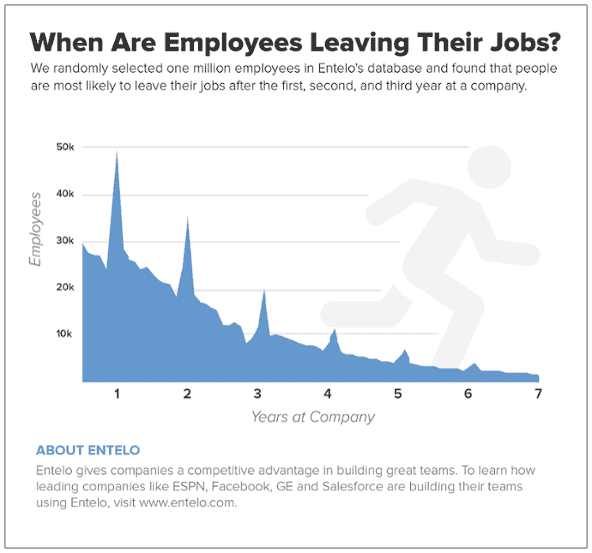
Every year, through Year 6, there's a clear and significant spike in departure around their anniversary. Why would that be?
Having spoken to many friends, colleagues, and managers, the common story plays out over and over again regardless of industry, role, or experience level.
When your work anniversary comes around, you know it. Starting a new job is an emotional moment you don't forget. As you reflect on that start, and what's happened since, it's common to take stock of where you are.
Most people ask themselves questions like:
- "Has this job been what I expected when I started?"
- "Am I progressing in my career as much as I hoped?"
- "Do I still want to be here a year from now?"
If the answers aren't what they wanted them to be, and their manager does not appear invested in anything changing, it's no surprise that the Elephant and the Rider can agree that looking for a new job is the best path forward.
Don't be the manager that fails to invest in the growth of their people. If your team is not making progress and growing, you may have to replace some of them sooner than you'd like. This is especially true for your most driven, and valuable team members.
[Ed note: If you're looking for help with career growth conversations, this post and this post are good starting points.]
4) Give Elephants the right amount of autonomy
A common mistake many managers make is to micromanage people on their teams. They often confuse getting the work done "the right way" with being done "their way."
When you direct people's work too closely, it's suffocating. What may have previously been something they enjoyed, can lose that satisfaction quickly.
In a study of 3,100 American workers by sociologists Melvin Kohn and Carmi Schooler, they found:
"Men who were closely supervised in jobs of low complexity and much routine showed the highest degree of alienation (feeling powerless, dissatisfied, and separated from the work).
Men who had more latitude in deciding how they approached work that was varied and challenging tended to enjoy their work much more. When workers had occupational self-direction, their work was often satisfying."
This idea should come as little surprise to regular readers of the Lighthouse blog as Autonomy is one of Dan Pink's 3 pillars for motivating modern workers that we've covered in past posts.
Know when to be hands on.
Do not take this warning as meaning you should always be a hands off manager. Instead, you should choose the degree to which you are hands on (or off) based on their Task Relevant Maturity.
This term coined by former CEO and founder of Intel, Andy Grove, can help you think about how to better spend your time with your team:
And this isn't just logic for the Rider; the Elephant is very involved in how people feel based on their Task Relevant Maturity:
- When new in a role or responsibility, there are many emotions (nervousness, excitement, uncertainty, lack of confidence) that can be calmed by additional support by you.
- When they are experienced in a role, trust them or you'll frustrate the elephant that is confident in its direction.
A story of disengagement
A friend of mine experienced this first hand at a past job. He was an engineer who had a manager that kept good projects for himself and left chores and simple tasks for the team. It was boring work that often came with very specific instructions to be done the manager's way.
This created a vicious cycle where my friend and his coworkers were less engaged, which reinforced the manager's belief they were the only one that could handle interesting tasks. This approach was unsustainable, and the manager eventually burnt out and quit.
When this happened, the other engineers suddenly loved their work again, as they faced real challenges, and had control over what they worked on.
Providing the right amount of support and autonomy is a never ending balancing act. However, the payoff is huge for the motivation and healthy direction of their Elephants.
It's worth taking the time to always consider, and re-evaluate when necessary, where people's comfort levels are in their work.
5) Help manage their motivational energy.
We've spent a lot of time talking about the Elephant, and that's because it's so often forgotten and misunderstood. However, it's also critical to remember the Rider.
The biggest weakness of the Rider is its limited energy; if you rely on your people's internal drive and self-discipline at all times, they will eventually run out of it. Whether that means full on burnout, or simply major drops in performance, you want to avoid exhausting the Rider.
Protect them from distractions.
One of the easiest ways to drain someone's motivation is with distractions that they have to deal with. This drains precious energy from them.
In a study of college students reported on in the book, Switch, they used a drain on self-control to show how it affected persistence.
Researchers put out a bowl of radishes and fresh-baked chocolate chip cookies. One group was allowed to eat the cookies, but not the radishes. The other group was allowed to eat the radishes, but not any of the cookies. Both groups were then asked to work on a challenging task.
The results were telling:
"The 'untempted' students, who had not had to resist eating the chocolate-chip cookies, spent 19 minutes on the task.
...the radish-eaters were less persistent. They gave up after only 8 minutes - less than half the time spent by the cookie-eaters."
When your team has to use the Rider's energy on other issues, they have less focus and energy left for the tasks you need them for. Protect them from pointless distractions and hassles.

Remind them of their purpose.
Not all work is sexy and exciting, but all of it is important to your team and the business. When you're trying to motivate your team on a tough project, remember to explain why it matters.
In another study of call center reps at the University of Pennsylvania (this one from Dan Pink's book, Drive), the effect of purpose was stark:
"The people in the group reminded of the personal benefit of working at a call center were no more successful in raising money than those in the control group.
But the people in the second group, who read about what their work accomplished, raised more than twice as much money, through twice as many pledges as the other groups."
When you work with your team to help them understand their purpose, remember to motivate both the Elephant and the Rider. The more you can bring in both a good business reason, and an emotional connection to coworkers, customers, or a bigger vision, the better.
--
It's not easy being a manager. Keeping your team motivated and moving in the right direction requires ongoing effort. The Elephant and the Rider is a helpful framework to keep in mind the competing forces you must work with to succeed with your team.



